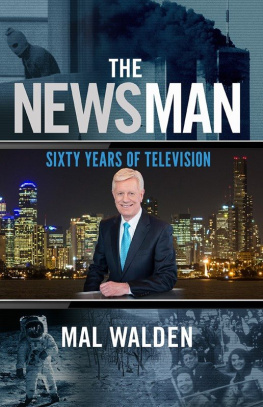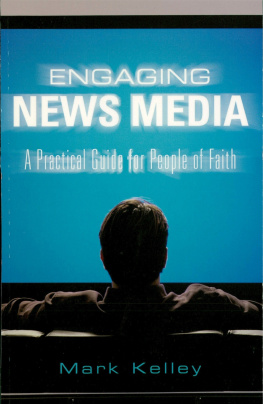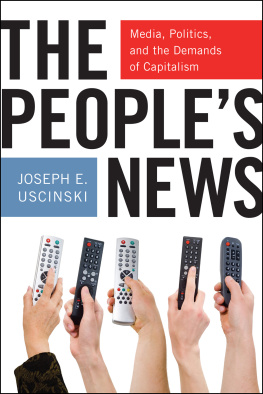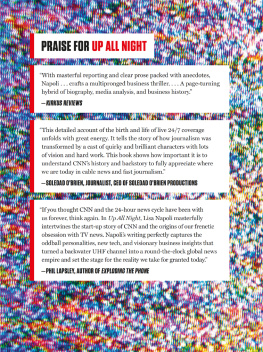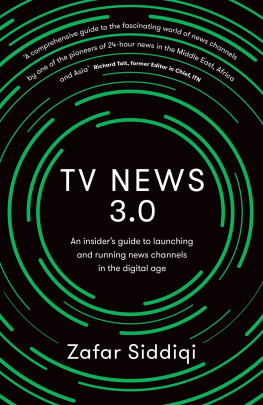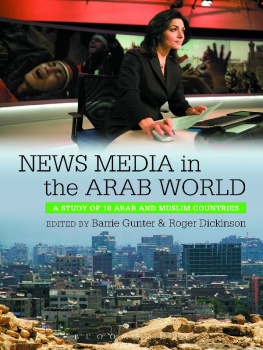Making News in India
First published 2012 in India
by Routledge
912915 Tolstoy House, 1517 Tolstoy Marg, Connaught Place, New Delhi 110 001
Simultaneously published in the UK
by Routledge
2 Park Square, Milton Park, Abingdon, OX14 4RN
Routledge is an imprint of the Taylor & Francis Group, an informa business
2012 Somnath Batabyal
Typeset by
Star Compugraphics Private Limited
5, CSC, Near City Apartments
Vasundhara Enclave
Delhi 110 096
All rights reserved. No part of this book may be reproduced or utilised in any form or by any electronic, mechanical or other means, now known or hereafter invented, including photocopying and recording, or in any information storage and retrieval system without permission in writing from the publishers.
British Library Cataloguing-in-Publication Data
A catalogue record of this book is available from the British Library
ISBN: 978-0-415-50163-7
For John Singh,
definitely my oldest friend
Contents
The speed at which Indian TV news has grown over the last two decades is nothing short of astonishing. Until 1991, the state broadcaster Doordarshan had a total monopoly of television news. That monopoly was broken during the first Gulf War, by two international broadcasters, CNN and the BBC, whose news and current affairs programming became available in India on cable and satellite. By the mid-1990s, the first commercial Indian news programmes were available to English- and Hindi-speaking audiences. Today, there are more than 50 Indian news channels in at least 20 languages broadcasting 24 hours a day. The quality, most observers would agree, is mixed. But the appetite for TV news in India among members of the public, and among media groups, appears unbounded.
The Indian TV news industry and it is very much an industry has been both a beneficiary and a victim of the speed of its growth. The medium has, in part, been reinvented for the Indian market and is, arguably, more minutely responsive to the habits and opinions of a section of its viewers than any other major TV news industry around the world. The industry has been able to use new technology and work practices in a way that would delight many commercially minded TV bosses in the West. But the shortage of trained TV journalists is all too evident, particularly on the less well-known channels and many of the channels make no secret of the fact that their news agenda is driven largely by commercial imperatives. For those who entered the profession believing in a journalists duty to be as fair and as objective as possible, this can be deeply unsettling.
Somnath Batabyals study of two Indian news channels, Star News and Star Ananda, both part of Rupert Murdochs widely demonised global media empire, is path-breaking. It is the first ethnography of an Indian newsroom, and he manages to get many of the initially untrusting workers journalists, managers, marketeers to talk quite openly to him. Batabyal uses his status both as a former TV journalist and as an academic, as both an insider and an outsider, to considerable effect and he switches between these worlds with ease. For instance, he marshals the professional techniques of a doctoral student steeped in the far-from-gripping methodology of ethnographic interviews, but soon finds it more effective to get information, opinion and trust from his interviewees by plying them with alcohol.
The results of Batabyals investigation are telling. The older journalists who began their careers in newspapers or magazines often construct print journalism as a utopian world to which they will one day return once they have earned enough money, while a younger journalist, who knows nothing but TV news, responds blankly when asked what he understands by journalistic objectivity, and then declares: I must remember that I am first an employee and then a journalist, never the other way around. According to me, there are two points to being a good employee. First, to never do anything that harms the employer. Secondly, to work as hard as is possible.
Friday is judgement day for every TV news channel in the country. Its when the weekly TRPs or television ratings points are released which everyone in the industry accepts are inadequate measures of performance, but which are followed and acted upon in obsessive and sometimes destructive detail. This ratings war discourages long-term planning and journalistic risk-taking and innovation in favour of hackneyed programming about crime, cricket and Bollywood. It further encourages the corporatisation of the TV news industry, as the advertising sales staff get deeply involved in areas of the business normally run by journalists and producers. As Batabyal argues in Making News in India , entertaining an extremely narrow notion of audience has become the prime driver behind news production. Television journalists tend to see themselves as entertainers, whose key success indicator is the popularity of the latest edition of their programme. Accuracy, impartiality and informativeness are of much lower importance. Sadly, there seems to be little short-term prospect of change.
Sam Miller
Most books are collaborative efforts. Several people come together to encourage and discourage, read, rant and rectify, facilitate and support what goes between the covers. In this instance, this book that took over seven years from conception to finishing has a long list of benefactors. Here I can name but a few.
Professor Annabelle Sreberny and I started at SOAS in the same year. She was a visiting professor and I was taking a year out of journalism to pursue a masters degree. It was largely her effort that convinced me that academia might not be beyond the realms of the possible for me. Every time those doubts resurfaced in the past years, a meeting with her reassured me. She went far beyond being my supervisor for this work and donned several hats. Annabelle gave belief when I had none. As mentor, her intellectual fervour gave direction to this work. As a friend, I have cherished the lunches, dinners, cocktails and conversations in and around central London. It was Professor Mark Hobart, my second supervisor, who suggested news ethnography as a possible area of work. He was deeply suspicious of a journalists application towards academic pursuits, so if this book can convince him of such possibilities, the effort would be worth it.
This work would not have been possible without the help of the journalists at Star News and Star Ananda. I wish to acknowledge the help accorded to me by Uday Shankar, who not only gave me permission to conduct the study but facilitated my stay at every level. His commitment to academia and to this work is much appreciated. To all the journalists who tolerated my presence, incessant questions and queries, who gave me their valuable time, this work would not have been possible without your co-operation. To Gopal Kaushik, Carolina Gomes and Yuvraj Bhattacharya, many thanks for making it so much fun. I must make a special mention of Yogesh Manwani, who not only gave me time and inputs and shared the secrets of the media market, but over the last few years has become a most valuable friend and ally.
London was the first city outside India that I stayed in for a considerable period of time. It is a city with which I have had a continuous love affair, loving its streets, the music and its people. To Priya Singh who first held my hand in an alien city, I am deeply thankful. She took me home to a posse of wonderful people: Greg, Jon, Maneesha and Naila, who for the past several years have shared and enriched my life. Jon, Naila, Maneesha and Priyas everyday observations on Indian television, its media and stars kept this thesis rooted. Gregs worldview, his passions ranging from psychoanalysis to cycling made me explore worlds hitherto unknown to me. Together they made the past few years my happiest.


